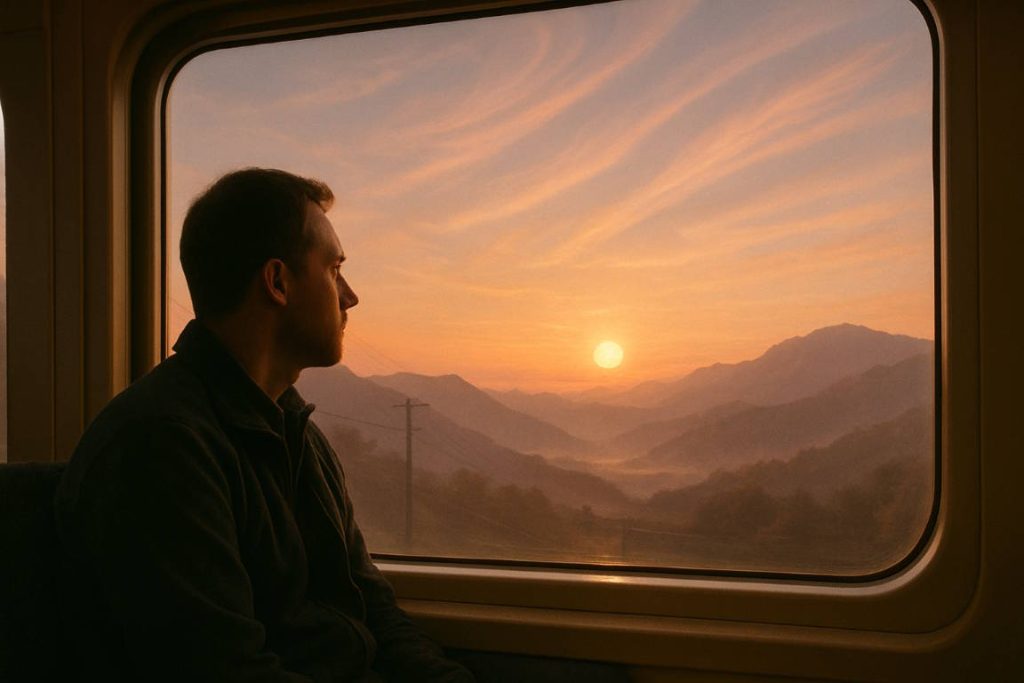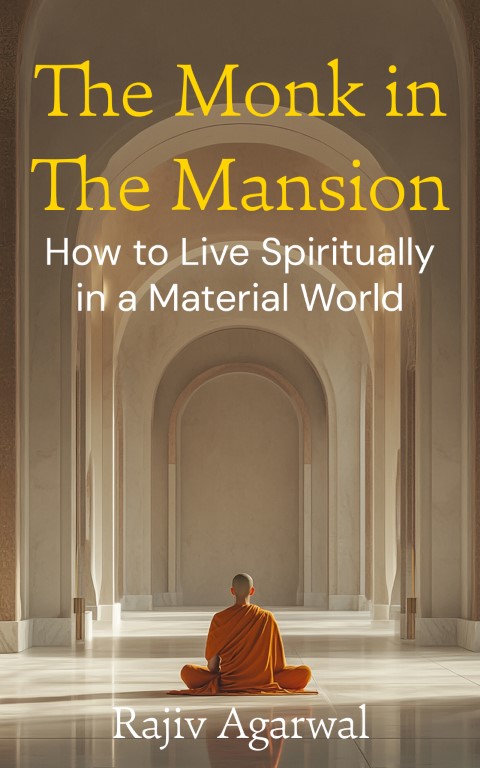
This reflection began one morning while I was traveling on the train in Melbourne, somewhere between two nameless stations. As the train hummed beneath me, the carriage was full and silent, as if everyone had agreed to disappear into their own thoughts. I sat there unnoticed, watching life play itself out in fragments.
A train commute is another small ritual in the choreography of daily survival. It is a ritual that asks for nothing except presence, yet that presence is rare. Here, time folds in on itself: the same faces, the same seats, the same stops, the same announcements dissolving into background noise. It is in these moments of repetition that life’s quieter questions slip between the cracks, inviting themselves to sit beside us.
The train is something like a horizontal monastery. Each carriage is a small world inhabited by the silent congregation of commuters, heads bowed, fingers flicking through digital rosaries, screens glowing with soft blue devotion. Some faces are drawn and weary, others unreadable behind the social masks. Most travelers are not really on the train but already at the office, or still tangled in last night’s quarrel, or adrift in anxious futures. The train, a narrow corridor of becoming, resists being. It offers no destination except another day like this one.
If you allow yourself to truly see, the ordinary train commute is its own meditation and a mirror held up to the hidden patterns of mind and society. Look closely: there is hierarchy in the small social space, an unspoken pecking order in the struggle for seats and elbow room. There is the dance of accidental eye contact, the subtle tension between isolation and togetherness.
Underneath this surface, deeper biological currents are at play. The nervous system, tuned by millions of years, scans for threat and comfort. The heart rate slows or quickens depending on the crowd and the person beside you. Cortisol trickles in response to a missed stop or a sudden jolt. Serotonin quietly measures our status. A seat by the window may bring a ray of joy, while standing, crowded near the doors, evokes a low hum of defeat. Small victories and losses accumulate here, shaping the narrative of a day.
What is the true destination of the daily commute? Is it only the office, the school, the grindstone of productivity? Or is it an invitation to see oneself in the theatre of repetition? Zen speaks of chopping wood and carrying water which are mundane daily activities as the path itself. The train commute is our modern equivalent of chopping wood and carrying water.
Can you be with the discomfort of boredom, the irritation of delay? Can you notice how your mind flees these sensations, inventing small distractions, fleeing toward the digital? What is it that you are truly trying to escape? And in these tiny actions like refreshing a screen, glancing at a stranger, what, exactly, is being sought? Is it relief from discomfort, or a deeper longing for meaning within the pattern?
The urge to become, to get somewhere else, is the pulse of modern life; yet being is always, paradoxically, here, on this train, in this moment.
The mind, when it finally lets go of its striving, can become attuned to the small world within. If you can pause, just for a breath, and let the repetition of the commute dissolve into presence, you may find that there is no “in the meantime”, no waiting between life and life. There is only “what is”, and in “what is”, the ordinary becomes the gateway to the ever present vastness.


2 Responses
Renungan yang mengingatkan setiap langkah kehidupan. 🙏💓
beautiful